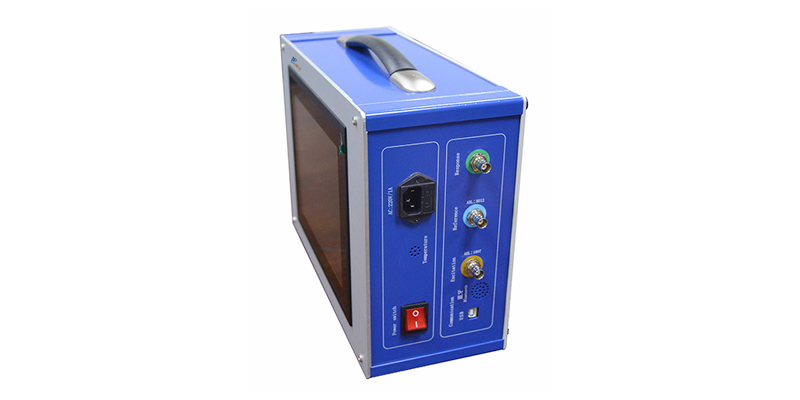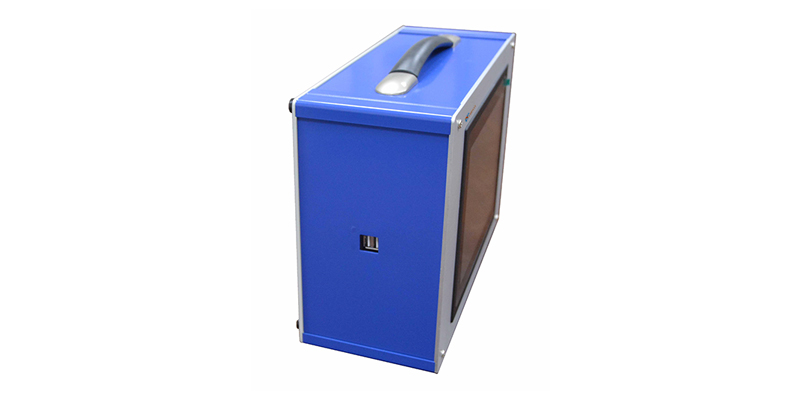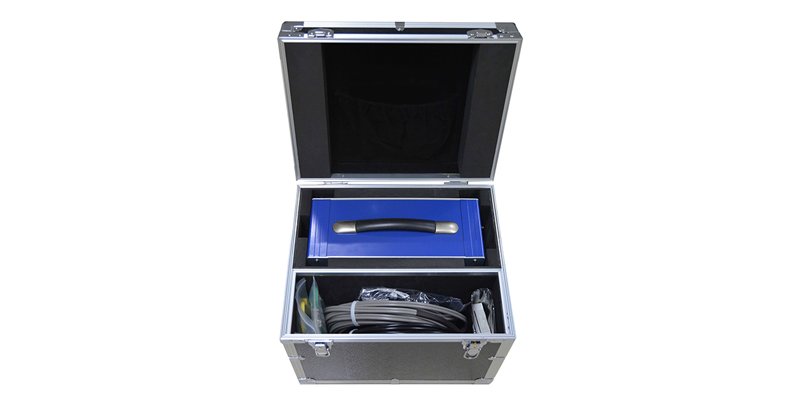


Transformer Winding Deformation Tester (SFRA)
General Information:
Power transformer winding deformation tester (frequency response method) is based on the measurement of characteristic parameters of transformer internal windings, adopts the internal fault frequency response analysis (FRA) method, can accurately judge the internal faults of transformers. After the completion of design and manufacture of transformers, the coils and internal structure are finalized, so for the coil of a multi-winding transformer, if the voltage level and winding method are the same, the corresponding parameters (Ci, Li) of each coil shall be determined. Therefore, the frequency characteristics response of each coil also will be determined, so the frequency spectrums of the corresponding coils of three phases are comparable. During the test of transformer, in case of inter-turn, inter-phase short circuit, or relative coil displacement caused by collisions during transport, as well as coil deformation resulted from electromagnetic tension during operation under short circuit and fault conditions, the distribution parameters of transformer windings will change, which thereby in turn affects and changes the transformers’ original frequency domain characteristics, namely the frequency response change in magnitude and the resonant frequency points shift. The transformer winding tester developed according to the response analysis method is the novel NDT equipment for detecting transformer internal fault. It applies to the detection of internal structure fault in 63kV-500kV power transformers. Transformer winding deformation tester is to determine the degree of changes in internal windings of the transformer based on the quantity of change, magnitude and region affecting change and tendency of frequency response change which are quantized from the response changes in different frequency domains of transformer’s internal winding parameters, and then it can help you determine whether the transformer has been severely damaged, or need a major overhaul in accordance with the measurement results. For the transformer in operation, no matter whether the frequency domain characteristic drawing is saved, by comparing the differences between the inter-coil characteristic spectra of faulted transformer, it can determine the extent of the failure as well. Of course, if you have saved the original transformer windings feature drawings, it will be simpler to provide a precise basis for operating conditions, post-fault analysis and maintenance overhaul of the transformer. Transformer winding deformation tester is constituted by a laptop computer and micro controller forming a precision measurement system with the compact structure, easy operation, with more complete test analysis function, which can be operated referring to the instruction manual or through short-term training.
Main technical features:
-The acquisition and control adopts high-speed, highly integrated microprocessor.
-The USB interface for communication between the laptop and the instrument.
-Use industrial computer and measuring instrument integration, no need to use mobile computer at the measuring site.
The hardware movement adopts DDS special digital high-speed frequency sweeping technology (USA). Through testing, it can accurately diagnose faults such as twisting, bulging, shifting, tilting, inter-turn short-circuit deformation, and inter-phase contact short-circuit.
-High-speed dual-channel 16-bit A/D sampling (the tap switch is changed in the field test, and the waveform curve has obvious changes).
-The signal output amplitude is adjusted by software, the maximum amplitude peak value is ±10V.
-The computer generates an electronic document (Word) from the test results.
-The instrument has the dual measurement system functions of linear frequency sweep measurement and segmented frequency sweep measurement.
-The amplitude-frequency characteristics conform to the national technical indicators of the amplitude-frequency characteristics tester. The abscissa (frequency) has two kinds of linear division and logarithmic division, so the printed curve can be a linear division curve or a logarithmic division curve, and the user can choose according to actual needs.
Test data automatic analysis system
Comparing the winding similarity between A, B and C three phases horizontally
The analysis results are:
①Good consistency
②Good consistency
③Poor consistency
④The consistency is very poor,
Longitudinal comparison of A-A, B-B, C-C to retrieve the original data and the current data in phase to compare the winding deformation
The analysis results are:
①Normal winding
②Slightly deformed
③Moderate deformation
④Seriously deformed
-Word electronic documents can be automatically generated for saving and printing.
-The instrument fully meets the technical conditions of the electric power standard "Frequency Response Analysis Method of Power Transformer Winding Deformation".
Technical Specifications:
| Scanning method | |
| Linear scan distribution | Sweep frequency measurement range: (10Hz)-(10MHz) 40000 sweep frequency points, resolution of 0.25kHz, 0.5kHz and 1kHz. |
| Sectional sweep frequency measurement distribution | Sweep frequency measurement range: (0.5kHz)-(1MHz), 2000 sweep frequency points (0.5kHz)-(10kHz) (10kHz)-(100kHz) (100kHz)-(500kHz) (500kHz)-(1000kHz) |
| Amplitude measurement range | (-120dB) to (+20dB) |
| Amplitude measurement accuracy | 0.1dB |
| Scanning frequency accuracy | 0.01% |
| Signal input impedance | 1MΩ |
| Signal output impedance | 50Ω |
| Signal output amplitude | ±20V |
| In-phase test repetition rate | 99.9% |
| Measuring instrument size | (length, width and height) 355X145X270(mm) |
| Carry case size | (length, width and height) 410X360X350 (mm) |
| Total weight | 17Kg |

